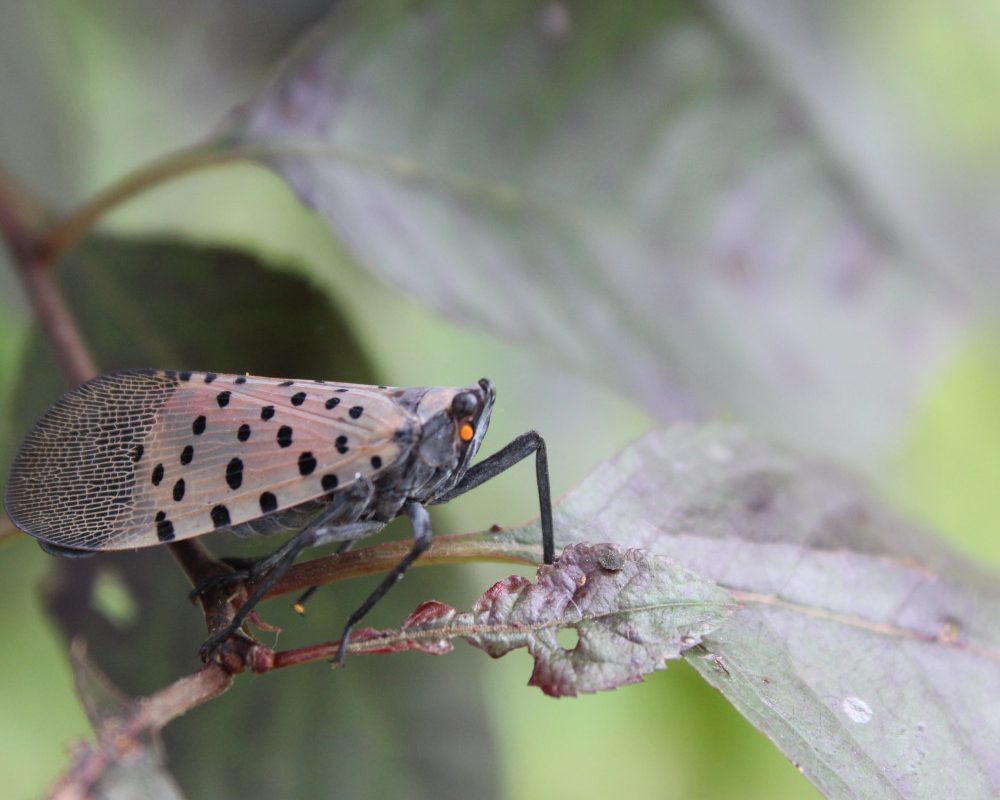
Don’t let the spotted lanternfly wreak havoc on your property with our guide on how to get rid of the spotted lanternfly.
The spotted lanternfly, an invasive pest, has been causing headaches for homeowners and farmers alike. These colorful yet destructive insects are a menace to various plants and trees, including grapevines and fruit trees. We’re here to arm you with tips and tricks on how to get rid of the spotted lanternfly so you can enjoy your outdoor spaces with ease.
If you’re searching for a pest control solution, we can help! With over 40 years of experience in lawn maintenance, pest control, and lawn and garden design, we have the expertise and knowledge to eradicate these pesky critters for good. Don’t let these invasive pests ruin native plant and wildlife habitats. Call ND Landscape Services at (978) 352-5400 or complete the contact form to get started!
What is the spotted lanternfly?
Before we dive into eradication and prevention, let’s get to know our adversary. Spotted lanternflies are known for their striking appearance, featuring wings with distinctive spots and vibrant red underwings. But don’t be fooled by their beauty; these bugs can wreak havoc on your plants. Not to mention, the spotted lanternfly is an invasive species causing issues throughout New England.
How to get rid of the spotted lanternfly
1. Physical removal
One of the simplest and most effective ways to remove spotted lanternflies is by physically removing them. First, grab a jar, rubbing alcohol, and a tree banding kit. To start, carefully collect the spotted lanternflies from the infested plants or trees and place them in the jar filled with rubbing alcohol. This method eliminates the immediate threat and helps prevent their spread.
2. Natural predators
Nature often provides its own solutions. Encourage the presence of natural predators in your garden or orchard. Birds like chickens and guinea fowl love snacking on these bugs, helping to keep their population in check.
3. Insecticides
Consider using insecticides if the infestation is severe and the above methods aren’t enough. However, using them responsibly and following the manufacturer’s instructions is crucial. Contact a professional team like ND Landscape Services if you opt for chemical treatments.
How to prevent spotted lanternfly infestations?
Eradication is essential, but prevention is equally important to keep these pests at bay. Here are a few ways to prevent the spotted lanternfly’s invasion.
1. Check for egg masses
Spotted lanternflies lay their eggs in masses found on trees, fences, and various surfaces. These egg masses look like grayish, mud-like smudges. Be vigilant in inspecting your property, especially during the fall and early spring, and remove any egg masses you find.
2. Tree banding
Consider using tree bands as a preventive measure. Tree bands are sticky bands that prevent spotted lanternflies from climbing trees and causing damage. Instead, they get stuck on the bands, making it easier to control their population.
3. Maintain healthy plants
Healthy plants are less susceptible to spotted lanternfly infestations. Properly care for your trees and plants, ensuring they receive proper nutrients and are well-pruned. Solid and vibrant plants are less attractive to these pests.
4. Stay up on the latest information
Stay informed about spotted lanternfly sightings in your area. Local agricultural authorities often provide updates and guidelines to help residents tackle the issue. Collaborating with your community can be an effective way to control these pests.
Are you still wondering how to get rid of the spotted lanternfly? If you’re looking to protect your plants from this invasive species, we can help. Call ND Landscape Services at (978) 352-5400 or complete the contact form to get started!
Photo by Magi Kern on Unsplash
